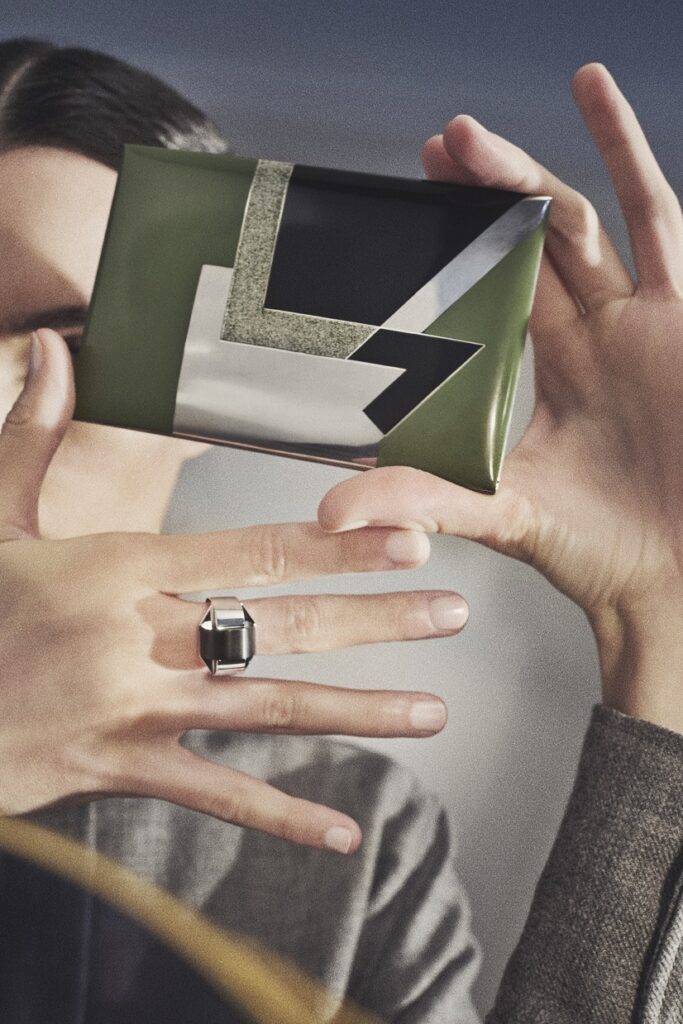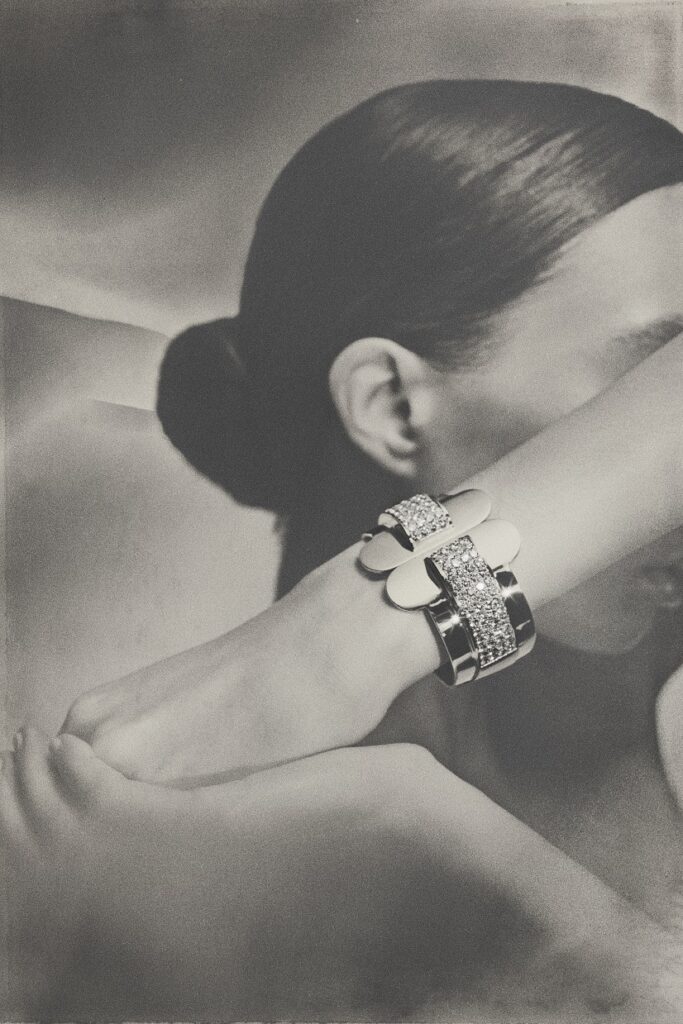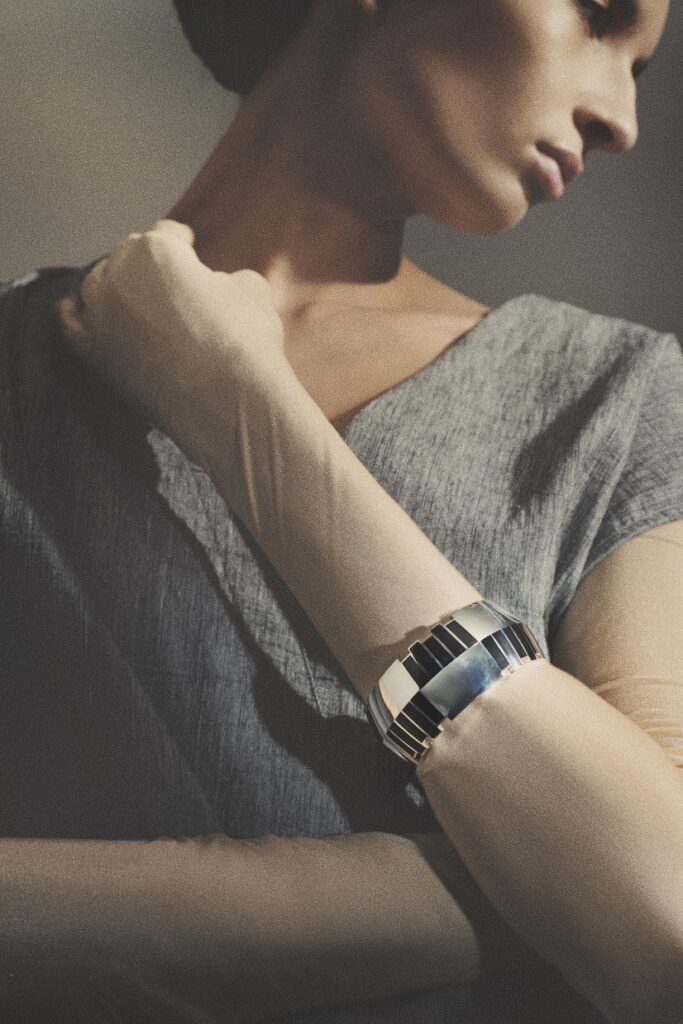Known for his streamlined, minimalist jewelry that moved design in a different direction in the 1920s and 1930s, Raymond Templier was one of the most influential innovators of the Art Moderne design movement.

Templier’s grandfather, Charles Templier, founded jewelry store, Maison Templier, in 1849, which was later run by his son, Paul Templier, who was Raymond’s father. Born in 1891, Raymond Templier, joined the firm in 1919 after studying at the Ecole Nationale Superierue des Arts Decoratifs. The Templier family business was a traditional jewelry store, supplying fashionistas with ornate garland style jewelry that was the epitome of chic at the time. But Raymond Templier had other ideas. He was interested in the modern world with its new forms of transportation, machinery and the avante garde cubist movement, creating jewels that were simple in form, yet filled with the complexities of geometric harmony.
In 1925 Templier exhibited at the Exposition Internationale des arts Decoratifs et Industriels in Paris, where his jewelry was met with great acclaim. Like other designers in the Art Moderne movement, Templier was more concerned with form than type of materials. He used white gold, silver, stainless steel, lacquer and enamel, with coral, lapis and onyx. Diamonds were used to bring light to his jewels, dramatically juxtaposing the sparkling gems against matte metals and dark enamels. He exhibited again in 1937.
In 1929, Templier along with several other jewelers including Jean Fouquet and Jean Depres, founded the Union des Artistes Modernes, a group dedicated to moving jewelry into the modern world. In 1935, Templier took over the family business, continuing to design each piece of jewelry with his signature. A Chevalier de la Legion d’Honneur, Templier’s jewelry can be found in the collections of the Victoria and Albert Museum in London, the Musee des Arts Decoratifs in Paris and the Metropolitan Museum of Art in New York. Raymond Tempier passed away in 1969, however, the family’s connection to jewelry never stopped. The passion lived on through Denise Templier, continuing through the next generations. The revival of the Templier name today is not a restart, but a continuation of an unbroken legacy.
Templier: A Living Legacy

Today, the next generation, led by brother and sister Louis Brunet and Caroline Roquette, is extending the Templier jewelry legacy, bringing Raymond’s modernist vision to life for a new generation to discover and wear. “It is a deeply personal and family-driven project. Templier is part of our heritage, and this is a long-term, meaningful endeavor, one we hope to pass on.” says Caroline brand co-founder. “My father Edouard Brunet, a specialist in collectible jewelry and precious stones in Paris, collected Templier pieces and passed on his passion for his ancestors body of work to us. He showed us their quiet power their incredible modernity and the exceptional quality of craftsmanship.”
Caroline explains that it became increasingly obvious that Templier’s vision deserved to be revived. “These are not just historical designs, they feel utterly contemporary, even 100 years later.”
Artistic Presence

Part of the appeal of Templier’s jewelry is that it speaks to timeless style, his work has an artistic presence that is beyond ornamentation, his pieces are miniature sculptures meant to be worn. “Raymond Templier was a pioneer who brought jewelry into modernity. He developed a unique Art Deco language in jewelry in the 1920s that was structural, graphic and deeply architectural,” explains Caroline. “He stripped jewelry of its decorative excess to reveal powerful, pure forms.”
One of the factors that set Tempier’s work apart from other jewelry designers of his day was that he didn’t look back to traditional sources for inspiration, instead his inspiration came from the rhythm of modern life. “He developed a jewelry language of his own working with opposites — matte and polished, sharp and smooth, black and light. And he mixed materials with freedom — gold, silver, lacquer, enamel, precious and fine stones, refusing all hierarchy,” explains Caroline. “His belief is that beauty lies in essential form. Nothing superfluous, just strength, clarity, and an elegance that feels as relevant today as it did a century ago.”
The Templier Archives

The brand builds on the Raymond Templier archives including drawings, photographs and family pieces to stay true to the original designs. The brand is taking some liberties such as using a design originally created as a brooch for a ring, or lacquer may be replaced by ceramic to be more durable for daily wear. “We stay as close as possible to the original spirit and proportions, with the same level of execution, “ says Caroline. “The contemporary editions reaffirm the timeless strength of his modernist designs for a clientele who seek purity, balance, and a distinct artistic sensibility.”
Very fine craftsmanship was a hallmark of Templier’s work. The new Templier jewelry is being made in France and Switzerland by artisans who understand both the technical precision and artistic sensibility required to recreate these pieces. “Every edition is produced in small quantities using traditional savoir-faire and the highest standards of haute joaillerie,” notes Caroline. “Looking ahead, we also intend to expand the creative dialogue. In time, we will develop new designs inspired by the core principles of Raymond Templier, structural clarity, graphic strength, and commitment to essential forms, bringing his modernist spirit into contemporary expression.”
Identifying Templier

How will consumers be able to distinguish between the original Raymond Templier pieces and the newly made jewels? The new pieces will be signed “Templier” and hallmarked according to French fine jewelry standards. Each contemporary piece will also have a unique number that ensures full traceability and it will come with a certificate of authenticity. The pieces from the 1920s and 1930s will be identifiable by the historic “Raymond Templier” signature and by the patina and wear of the piece.
The greatest challenge for the brand according to Caroline, is in balancing two opposing forces — the time and precision required to craft rare, limited edition pieces and the need to build a healthy, lasting brand. It’s about creating something economically sustainable without compromising artistic integrity. The goal is to stay true to the essence of Templier, bold, pure, collectible while becoming a brand that resonates with today’s audience and that will also introduce new designs in the future, guided by the same values.
“Templier is more than a brand, it’s a family story,” concludes Caroline. “We’re not building a brand around trends or nostalgia. We’re continuing a legacy; one of modernism, design excellence, and artistic boldness. The spirit of Raymond Templier lives on in each piece we create.”
For more on Templier visit: https://templier.com/en
Top of Page: Silver, black and cream lacquer Zig-Zag cuff bracelet; white gold and ceramic Architecture Verticale Earrings both by Templier.
Authored by Amber Michelle
